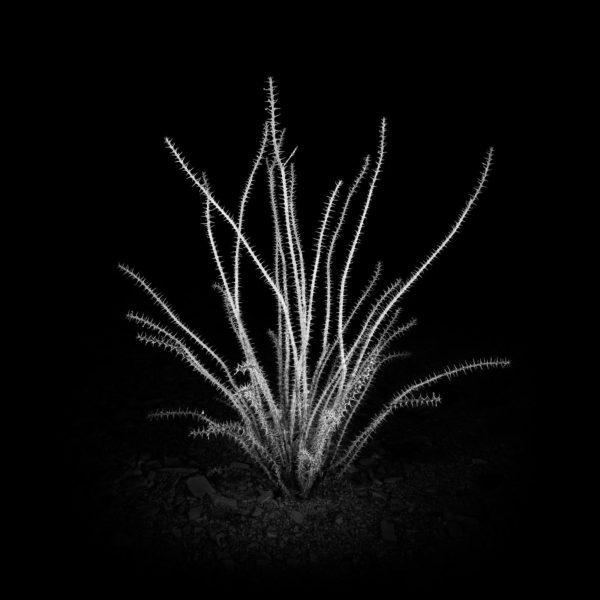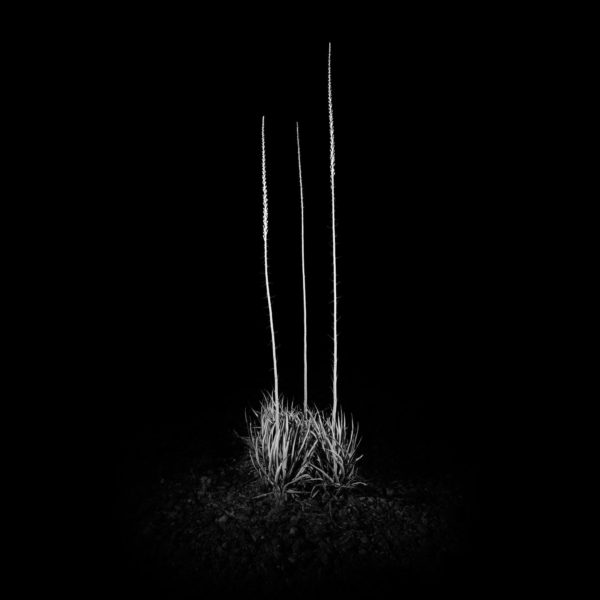One of my favorite things about living in a city — really any city — is that you can routinely have the experience of learning in a sort of embarrassed awe that there’s a ruins of a hot springs down the road from you, or a Serbian distillery. Dorćol Distilling Company is less than a mile from my house and I had no idea existed until a few days ago. Dorćol specializes in rakia, a clear apricot brandy that is incredibly delicious and, by some accounts, having four to six shots of it after dinner is good for digestion. Dorćol is open Thursday through Sunday as a very chill bar, and is also the host to a brilliant show by the Texas-based photographer Scott Martin.
Martin is an artist who deploys his deep familiarity with a specific place to create resonance in his work. In this case, the place is Big Bend, the national and state park in West Texas, that Martin visits many times a year, and has for years. Big Bend is massive, tranquil and eerie. There are certainly bodies buried in the hills, and ghosts in the canyons, and the stillness of the rocks in the night feels prehistoric.
Martin’s process for creating the pieces in LUNAR was obsessive. He would walk around Big Ben and identify plants that would be good photo subjects, and mark their locations and then wait for moonless nights and go back to them and photograph them with a long exposure and a flashlight. The printing process was complex enough to quote Martin directly:
“Sheets of 16 guage steel are cut and then powder coated matte black twice and baked at 500°F. These sheets are then printed onto with a large industrial printer using only white ink. Each image is printed 3 times with precise registration to achieve the desired bright white opacity. A custom printing mode was created and calibrated on this machine specifically for this series.”
The photos are simultaneously stark and ecstatic, and the printing process gives them an embossed tactility. Using the flashlight on moonless nights charges the plants with their own radiance, as if they were coated in radium, or were bioluminescent underwater plants — an intentional echo by Martin as Big Bend was once covered by the ocean. The pieces also remind one of the stereographed x-rays of flowers at the entrancing Museum of Jurassic Technology in Los Angeles (a mix of surreal and beautiful real and fake exhibits; I tried get hired there when I lived in LA and they kindly told me I “wasn’t twisted enough”). The charge in Martin’s pieces is how they seem to effortlessly hover between representing in black and white the elemental nature of an object while conjuring metaphysical and aesthetic connections that drift through the mind like a jellyfish.
LUNAR was a difficult “low yield” process that Martin says he is unlikely to try again. Some of the pieces have slight imperfections and blurring that Martin left in to reflect the inherent difficulties in such a complex process. These imperfections have a bittersweet poignancy to them that illustrate the impossibility of completely capturing a vision. We cannot see exactly what Martin saw on those moonless nights, but LUNAR etches an endless moonless night on steel, and sees life as the neon white light sprouting out of the darkness.
Scott Martin: LUNAR runs through November 4th at Dorćol Distilling Company, San Antonio.






